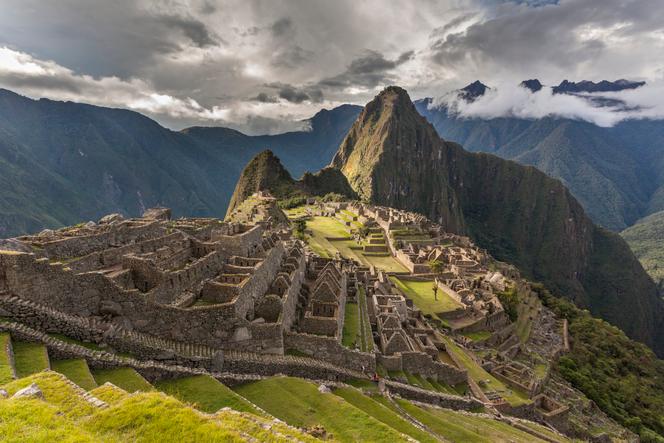
The Inca myths say that the sun did not exist at the beginning of time and that the people lived in eternal darkness. It was the creator god Viracocha who gave birth "to the sun and the day." Then he caused the moon and the stars to appear.
After having turned a first wave of humanity to stone, as they were reluctant to accept his supremacy, he designed as many stone prototypes as there were people to whom he wanted to give life. He placed them inside caves and mountains and at the bottom of wells and lakes in the four regions of the world. Finally, with the help of his servants, he urged them to come out to the surface of the Earth and to form themselves into communities. Viracocha then left the world of men, passing on his powers of procreation to the sun.
The various positions of the sun, solstices, equinoxes, phases of the moon, eclipses, shapes of the constellations, lightning and rainbows were all objects of great interest among the Incas. Observatories placed on summits and promontories allowed priests to access precise data on seasonal variations and to make forecasts relating to rains or droughts.
The celestial world was inextricably bound up with beliefs and rituals necessary to maintain the cosmic order, and celestial observations were subject to symbolic and religious interpretations. The rulers descending from Manco Capac (who founded the dynasty in the 13th century) were self-proclaimed "sons of the sun" and also gave a real political dimension to the celestial bodies and their movements.
Toward the middle of the 15th century in Cuzco, capital of the empire, the Inca emperor Pachacutec had Coricancha build a temple of the sun dedicated to his "ancestor." It was entirely adorned with gold, silver and precious stones. The Spaniards stripped it completely, and then destroyed it. Only its foundations remain, with very beautiful Inca fixtures that today support the church and the convent of Santo Domingo.
The sun king
In the main room, the sun was represented by a golden disk with a human face from which light radiated, surrounded by mummified bodies of Inca rulers. The sun was also represented by an anthropomorphic statue, again in gold, placed on a seat of the same metal. The hollow belly of this statue was filled with a paste made from gold powder, ashes and dried hearts of the dead Incas. With its brilliance and immutability, gold was the most precious material, the brightness and vibrance of the yellow metal manifesting the acting powers of the huacas (divine forces).
You have 70.82% of this article left to read. The rest is for subscribers only.